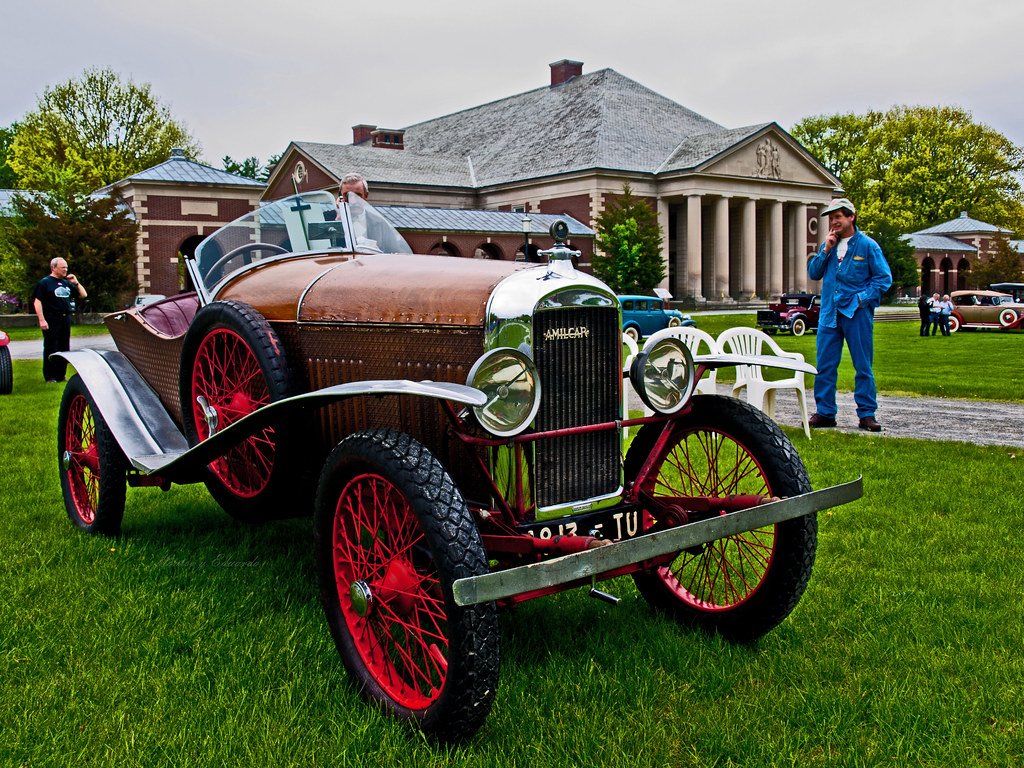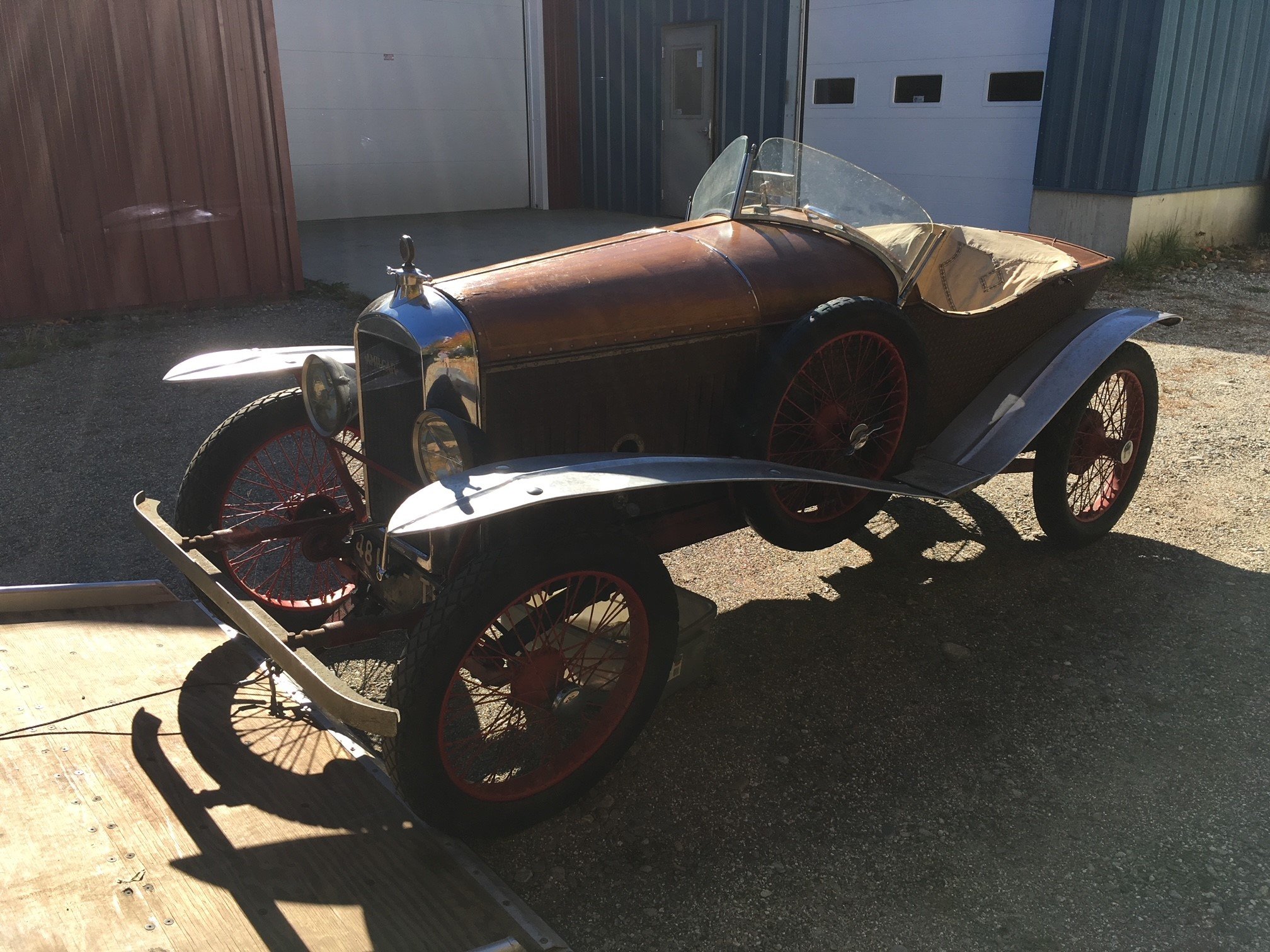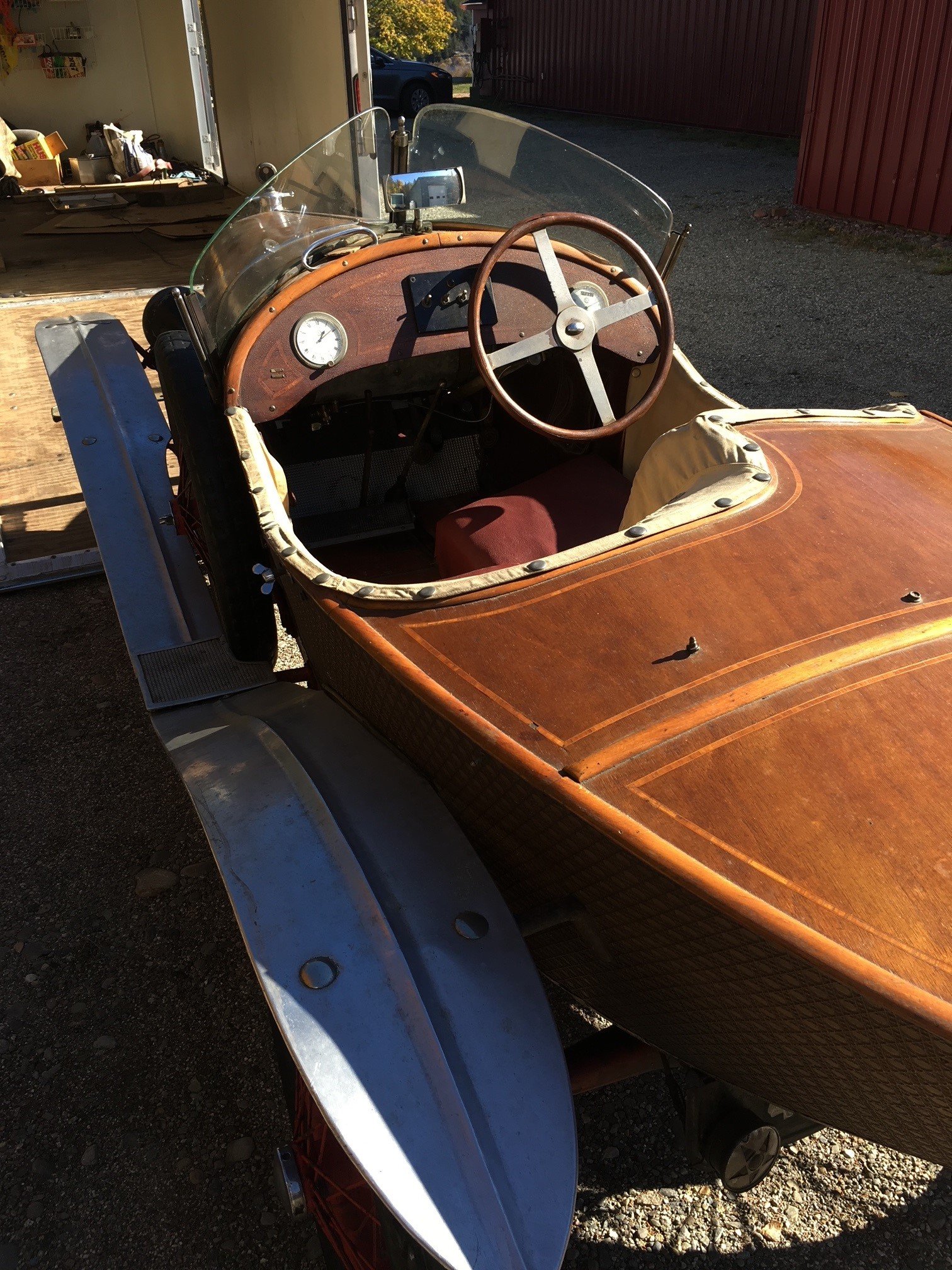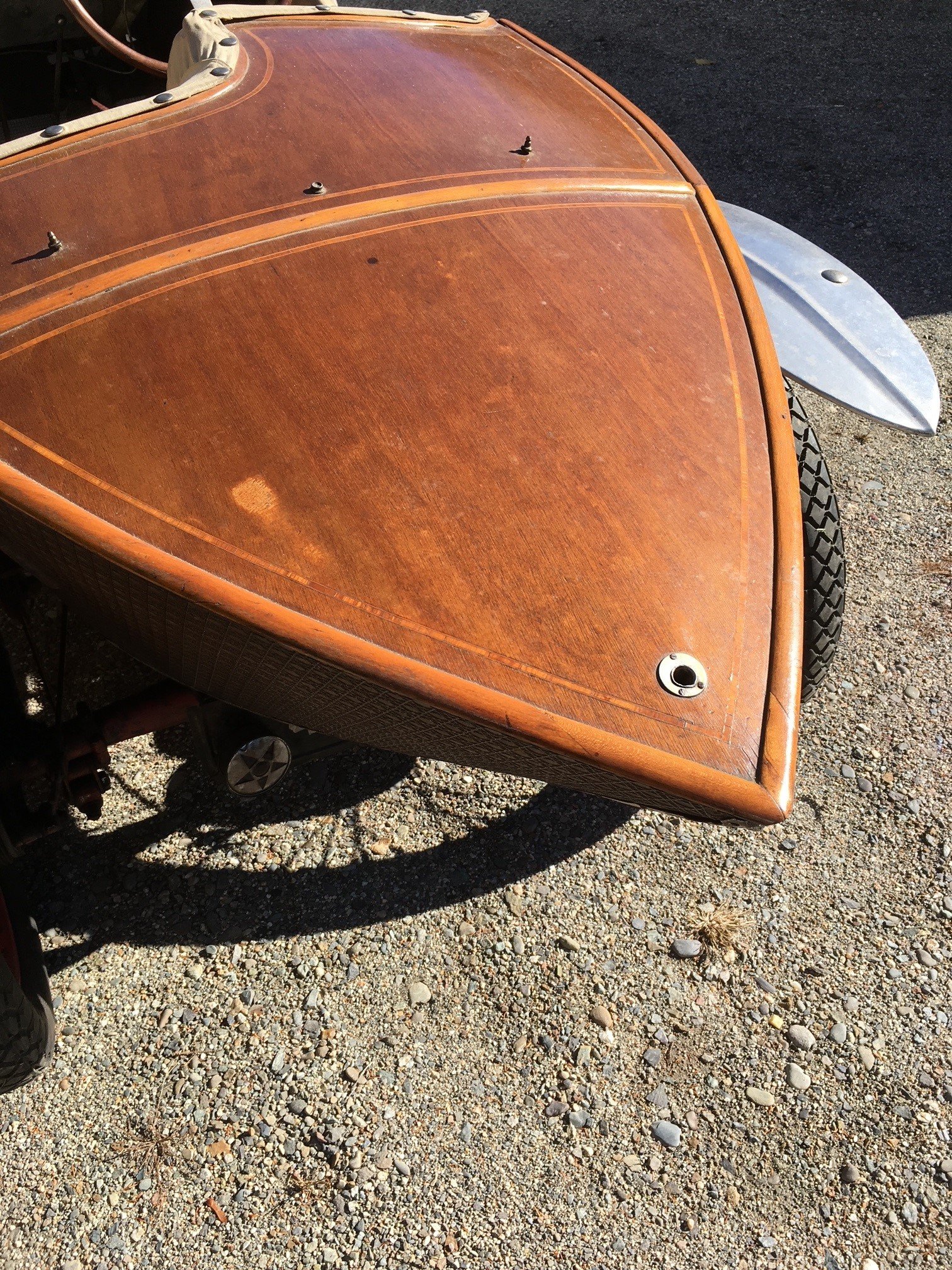1925 Amilcar Petit Sport
Generously Lent by Andrew Oldman





Even though Amilcar made small vehicles to qualify for tax exemptions, their cars were some of the most stylish and attractive vehicles built in France – or anywhere else in the world for that matter. Many Amilcars sported a torpedo body, but this skiff style utilizes a unique wood construction; a style that mimics speedboat designs of the 1920’s.
Early Amilcars are some of the most charming vehicles produced in the 1920’s and have even been referred to as a “poor man’s Bugatti.” In the United States, wood bodied cars were not built as a style statement for more than a decade after this Amilcar was finished in 1925. At this point in the States, wood was still seen as a cheap and quick way to body a utilitarian vehicle. With goals to keep weight as low as possible, to qualify for a “voiturette” classification, both wood and aluminum were great ways to both keep weight down and make a statement when cruising down the street.
In France, a “voiturette” automobile was eligible for reduced vehicle tax if it met three guidelines: the car weighed less than 350 kg (771 lbs.), provided seating for no more than two people, and powered by an 1100 cc engine or smaller. Where the Amilcar lacked in performance, it was made up for with brilliant design. The boat tail of this Amilcar was built with mahogany veneer, along with beech and box wood inlay. An lincrusta basket weave applique seen on the lower body is stunning, contrasting well with the aluminum fenders.
While it is far from the most powerful car in the gallery, this Amilcar Petit Sport lives up to its name. It proudly wears a lightweight and attractive sporting body, paying homage to speedboats of the period.
Specifications:
Engine: 1.0 Liter Inline-Four Cylinder
Horsepower: 18 hp
Transmission: Three-Speed Manual, Straight Cut Gears
Top speed: 60 MPH
Weight: 850 lbs.

